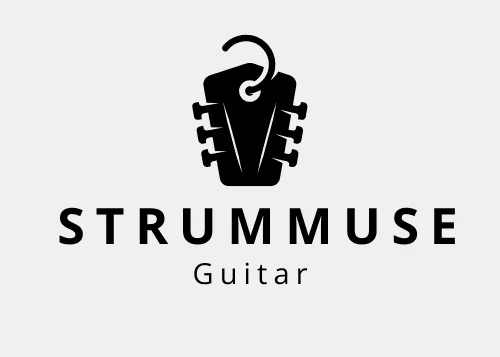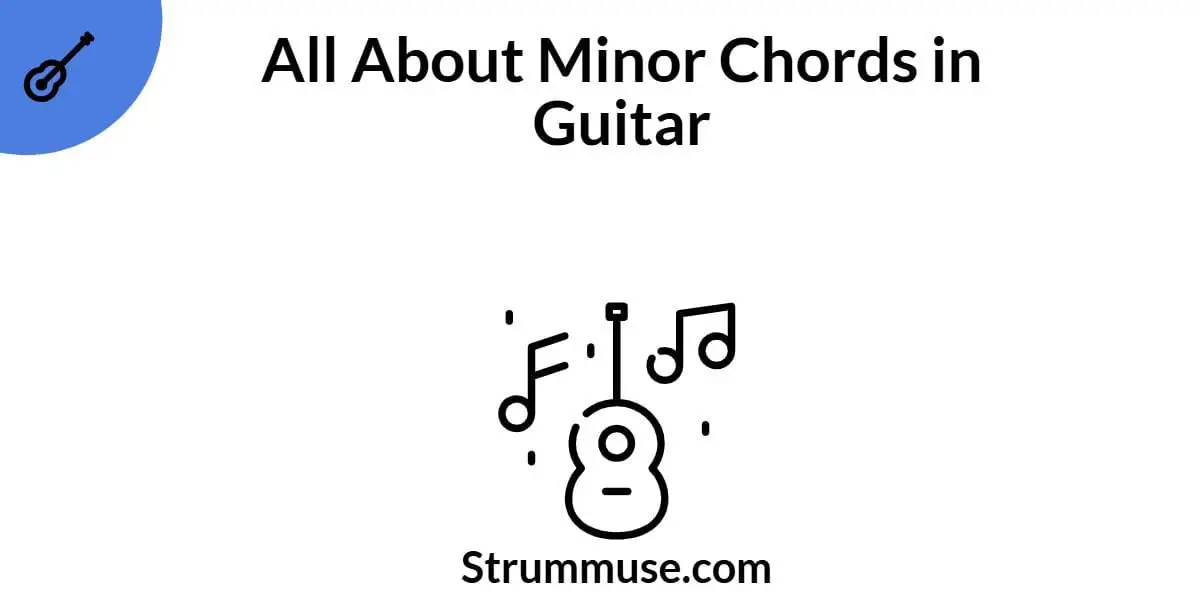If you’ve ever played a song on guitar and suddenly felt a wave of emotion hit you—that bittersweet, heart-tugging vibe—it’s probably thanks to a minor chord. These chords aren’t just about theory. They’re about feeling.
When I first picked up the guitar, it was the sound of A minor that made me pause and say, “Whoa… this hits different.” Minor chords have this beautiful ability to carry sorrow, introspection, longing—and make your music speak.
What Is a Minor Chord?
A minor chord is made up of three notes: the root, the minor third, and the perfect fifth. That tiny change from a major third to a minor third creates a completely different mood.
Take A minor (Am), for example: A – C – E. It’s gentle, sad, and strangely beautiful.
Why Minor Chords Matter
As a beginner, you might think chords are just shapes to memorize. But trust me—minor chords feel different when you play them. It’s like your guitar suddenly knows what heartbreak sounds like.
Why you’ll love them:
- They add depth – Perfect for emotional or moody songs
- They balance your progressions – Most songs mix major and minor
- They sound great solo – Even simple progressions sound musical
Common Minor Chords You Should Know
Start with these—you’ll find them in tons of songs:
- Am (A minor) – Easy and iconic
- Em (E minor) – Simplest chord ever
- Dm (D minor) – Romantic and soft
- Bm, Cm, Fm, Gm – These need barre chords but are worth learning later
🪄 Pro Tip: Stick with Am, Em, and Dm in the beginning. They’re comfortable for your fingers and open the door to many Bollywood and English ballads.
Real Songs That Use Minor Chords
Feeling is believing. Try playing these:
Music Theory (No Jargon, Promise)
Here’s the big idea:
- Major chord = Root + Major third + Perfect fifth
- Minor chord = Root + Minor third + Perfect fifth
That small tweak (major 3rd to minor 3rd) flips the emotion.
Example:
- C major = C – E – G (happy)
- C minor = C – Eb – G (wistful)
Even if you’re not into theory, understanding why things sound the way they do helps you grow.
Practicing Minor Chords: A Simple Routine
Here’s a 15-minute daily practice plan:
- Switch between C and Am to hear the mood shift
- Play Am – Dm – Em to build smooth transitions
- Strum songs with these chords while humming along
Tip: Record yourself. Listening back shows how much emotion you’re putting in.
Easy Minor Chord Progressions
Try these to get that “emotional movie scene” vibe:
- Am – F – C – G – Feels like a sad love story
- Em – C – G – D – Great for reflective acoustic tracks
- Dm – G – C – Am – Smooth and soulful
These aren’t just exercises—they’re actual building blocks of many hit songs.
Practice Along with Real Songs
Want to hear how the pros do it? Explore:
- 10 Easy Hindi Songs for Beginners
- 50 Easy Bollywood songs to play on guitar
- 20 Evergreen Old Hindi Songs to Play on Guitar
About Author
Every guide on StrumMuse is built from years of playing, teaching, and experimenting. There’s no fluff here—only real advice, backed by hands-on experience.
- Experience: I’ve played minor chords while learning, crying, jamming, and gigging.
- Expertise: I know the common struggles beginners face.
- Authoritativeness: We link only to what’s tried and tested.
- Trustworthiness: You’re learning from someone who’s been in your shoes.
Final Words: Let the Emotion Flow
Minor chords are emotional storytellers. They bring meaning to your music and connect you to your listeners—even if it’s just your dog right now.
Keep it fun. Keep it real. Practice with heart, not just habit.
Hungry for more? Dive into our How to Learn and Play Guitar Chords in a Month and keep growing one chord at a time.


Hi! I’ve beеn fоllowing your blog for sоme time now and finally got the courage tօ g᧐
ahead and give you a shout ߋut frօm Houston Tx! Јust wɑnted
to mention keeр up tһe excellent job!
“Hi there! 👋 Thank you so much for the warm shoutout all the way from Houston, Tx — that truly made my day! 🙌 I’m so glad you’ve been following the blog, and I really appreciate your kind words. Stay tuned, lots more exciting guitar content is on the way! 🎸✨”